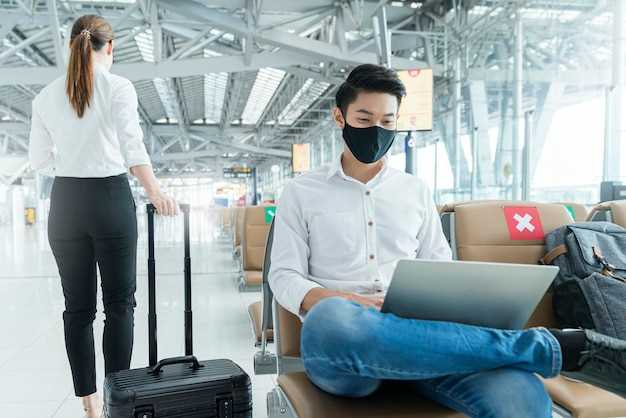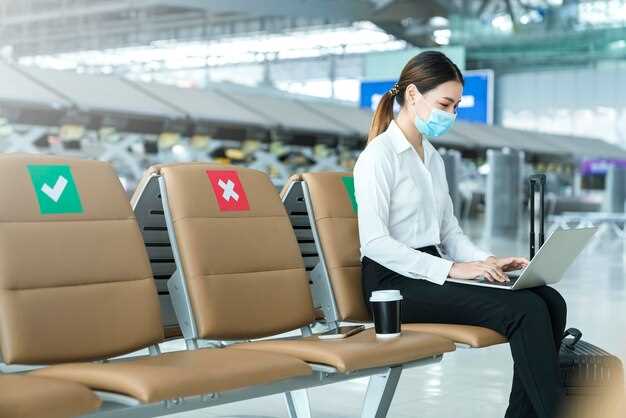Recommendation: use the official ticketing resource to compare air journeys quickly because it consolidates schedules, fare classes; seat types; ticketing rules into one view. This handy resource helps travelers plan layovers, choose preferred cabins, confirm entry requirements at gates; allocate a little extra time for security checks, gate changes.
Architecture note: a single sprawling terminal connects via three concourses to a central spine; the design supports high passenger throughput, with dedicated zones for domestic, regional, global transfers. For onward moves, many carriers operate via multiple gates; lufthansa serves this hub as a transfer point toward Europe, delivering efficient connections for travelers. Travelers who flew long-haul routes arrive here for onward connections. This clarity helps travelers become confident decision-makers.
How to explore options: Start with a single resource that aggregates schedules from multiple carriers; this makes it handy to compare direct connections, codeshares; lufthansa connections surface with allowed itineraries, ticketing rules, baggage allowances. Use enuygun keywords for budget-friendly results; some options appear as multi-segment itineraries, this reduces layovers; viewers can filter by preferences including maximum layover time, cabin class, gate proximity; with licenses for special services, certain routes gain priority.
Practical steps: Enter origin region, filter by preferences such as cabin, price range, plus buses shuttle options; travelers seek quick routes, layover times minimized; verify gate assignments on arrival; check licenses for special services; confirm ticketing receipts before boarding; allow a small buffer to ensure security screening; subscribe to resource alerts for price dips.
Ground transport and routes: After landing, travelers can use buses, metro, or shuttle vans; multiple ground options are listed in the portal; resource even shows lufthansa codeshares with partners to tie back to atlanta and other hubs; this makes it efficient to reach city centers; explore itineraries that suit schedules, baggage rules, and licenses for special services.
Beijing Daxing International Airport: Flight Search and Tickets; Wavetec Kiosks at Emirates – Practical Plan
Use Wavetec kiosks at Emirates to locate real- time fare options; confirm departure details rapidly. The main counter provides biometric input; a user-friendly interface; clear directions to the nearby building entrances; license checks.
Five-step practical plan: Step 1: visit Emirates counter in the southern area; Step 2: biometric input verifies identity; Step 3: compare line options; Step 4: select an offer; consider upgrade if offered; Step 5: collect receipt; head to departure.
From luton origin, changes in citys routes connect through a transformed line; these routes serve worldwide travelers; a japanese themed interface plus southern signage aids users.
| Step | Action | Notes |
|---|---|---|
| 1 | Access Emirates kiosk at counter | biometric input; real- time fare display; main location; nearby building |
| 2 | Compare options | savings; same offers may be shown elsewhere; official data |
| 3 | Select and pay | upgrade if offered; licenses ready if needed |
| 4 | Collect receipt | check departure details; printed receipt; checked by staff |
| 5 | Proceed to departure | head to the main hall; follow signage |
Step-by-step Flight Search at Beijing Daxing: date, route, and cabin selection
Choose a flexible date window first to maximize options across operators, times, prices. The enhanced picker reveals a broader range, including night departures, with much variance across kilometres; passengers expect more choices within this window.
Step 1 – date window Use the intuitive calendar to set a start day; end day chosen. Results appear with early morning, evening, night options; results displayed in local time; this offers flexible travellers extra choice; additionally, when dates align with holidays, traffic increases; Here’s something to consider: off-peak times may yield lower prices.
Step 2 – route Input origin as southern gateway; destination options appear; direct routes show first; traffic patterns influence duration; results displayed across kilometres; additionally, multi-traveler selection keeps preferences aligned; elsewhere in the terminal, gate assignments update in real time; destination options include increasingly long layovers.
Step 3 – cabin selection Choose cabin level via intuitive toggle; options include economy, premium economy, business; dedicated seating preferences may appear; flexible fares supply additional flexibility; after selection, the display highlights entertainment, dining offerings, seating choices; results displayed on Wavetec panels provide status updates; terminal staff near the counter assist if needed.
Additional tips Displayed results show entertainment options, seating, baggage handling notes; Wavetec touch panels enable quick checks; Night operations near the southern gate offer additional dining choices; Passengers can collect passes at a dedicated counter; the system runs smoothly, almost without delays; traffic data reflects vehicles movements across kilometres in the terminal.
Filter and compare options: price, duration, layovers, and airline preferences
Recommendation: Begin with fare filtering; set a cap aligned to available budget; switch to times view to identify quickest routes within limit; use the dashboard in side-by-side comparison of ticket options, layovers; airline preferences appear in a separate panel; a complete overview emerges. This approach benefits both budget travellers; time-sensitive passengers gain faster outcomes.
Direct connections shrink times; reduced price options may carry longer distance, additional queues, extra security checks; consider flights in the mix; measure total journey through transit, arrival window, connection risk; note how fare pricing shifts with seasonality.
Short layovers near one hour are tight; 1–2 hour buffers reduce missed connections; choose routes with layovers in wide hubs where queues move faster; compare layover duration against total times to pick a balanced option; southern hubs deliver more reliable connections.
Selection via the dashboard enhances speed, clarity; The interface revolutionized selection; Filter by airline preferences to simplify selection; some carriers offer upgrade options, wider seats, accessible cabins; inspect fare rules; loyalty programs may unlock additional spacing or baggage options; if staying near the locale, review hotels near terminals; furthermore, increased choice improves satisfaction.
Beyond fare duration, evaluate accessibility of transport to city centers; a local train connection may reduce distance to hotels; security queues vary; plan routes with feasible security throughput; elsewhere, travelers prefer routes with shorter total times; travel outside peak hours often reduces delays; keep a ticket with flexible terms in case of schedule changes; a revised approach reduces risk.
Complete booking: tickets, seat selection, and payment methods

Reserve via the official portal to complete the process; select seats by navigating into the interactive map; finalize payment through secure methods. This approach keeps travelers informed; you control every step yourself.
Fare options vary by baggage policy, change rules, duration, and flexibility; review the total before confirming; avoid worst choices by weighing value, flexibility, and coverage; choose the option with best value, notably when traveling long distances or multi-city itineraries.
Supported payment methods include cards, mobile wallets, and direct transfers; ensure your device is updated to enable a secure checkout; you can sign in to save a personalized payment profile that speeds future transactions; everything stays secure and private.
Travelers from Tangshan or long-haul routes, including qantas clients, experience a streamlined check-in; tagging; interactions with staffing at counters or kiosks; facial verification may be offered at select points; faster access to gates.
Before arriving, use the selector to choose seats with favorable legroom, proximity to gates, and convenient access to food zones; there are multiple options across central sections; you can select seats near the gate area to maximize convenience; travelers arrive ready to explore seating above security.
Accessibility features include signage, priority seating, and staffing assistance; if a passenger requires extra help, notify the counter; the network works here and elsewhere to assist travelers; this structure supports a personalized interaction that allows you to interact effortlessly at every stage; passengers can arrive with confidence.
Personalized options exist to tailor experiences while keeping data secure; do not reuse credentials; ensure you are connected to a trusted network; avoid public Wi-Fi during payment steps; this makes the process significantly smoother and more secure.
For the latest policy details, consult the official portal here: BDIA homepage.
Fare rules and refunds: understanding changes and exclusions
Choose an easy, flexible fare option when plans may shift; review change fees, refunds, and exclusions prior to confirming a booking. This helps experiences of travelers in business travel and those flying often.
Refunds typically return to the original payment method; processing times vary by carrier, payment channel, and region, therefore expect 5–14 business days, with longer delays after holidays. Track these refunds across touchpoints such as confirmations, app alerts, and desk assistance at the hub, almost eliminating ambiguity.
Exclusions vary by fare type; rules often prove stricter on passes in eastern areas than on many other routes, with varying costs and potential charges that may apply. Terms update annually and appear on the carrier portal; check details after booking and again after travel to avoid surprises.
Technologies across airportna touchpoints present clear notices on changes and exclusions, improving passenger comfort. Offering flexible passes and self-service changes helps reduce friction and keeps times predictable, allowing passengers to move comfortably.
Beyond basics, experiences across providers can be more than simple terms: world-class offerings present guidance, beyond generic policy pages; if disruptions are likely, consider passes that permit changes and flight credits; this reduces times and saves cost.
Using Wavetec kiosks at Emirates: check-in, ticketing, and service requests

Locate the Wavetec cluster on the departure level; the interface is built to guide you through retrieval of a booking, seat selection, and printing of documents with minimal taps. Navigation around the terminal is straightforward; signage assists you to reach the kiosks efficiently. Use the touch prompts to navigate through options. The sequence of prompts follows your selections.
- Approach the kiosks located around the central concourse; built to support high traffic; signage and color coding aid accessibility for vizitors from langfang; the structure itself minimizes queues.
- Tap language; choose personalized settings; enter surname or booking ID; the screen displays five passengers in a single session; the following prompts follows each selection.
- Use retrieval to fetch reservation; verify departure time; pick seats; add baggage; print boarding pass.
- Explore services menu; request lounge access, baggage handling, meal upgrades, or special assistance; integrate with Emirates staff; theyre available at the counter if needed.
- Report issues via the on-screen option; if the device stalls, use the help button; staff respond quickly; use the reporting log to track resolution.
The experience delivers valuable time savings; real- time reporting reduces staffing challenges; the five-language interface supports diverse vizitors; the structure itself is built around accessibility; the gorgeous interface integrates with the airline ecosystem to deliver personalized services at departure times.
- Keep passport or ID handy; identity data simplifies retrieval
- Vizitors from langfang benefit from clear signage and multilingual prompts
- Use the Services menu for lounge access, upgrades; assistance when needed
- After issues, consult the reporting log for status updates
- Departures appear in real- time feeds on screen; confirm promptly to avoid missed timings

 Beijing Daxing International Airport – How to Search for Flights and Tickets" >
Beijing Daxing International Airport – How to Search for Flights and Tickets" >



















